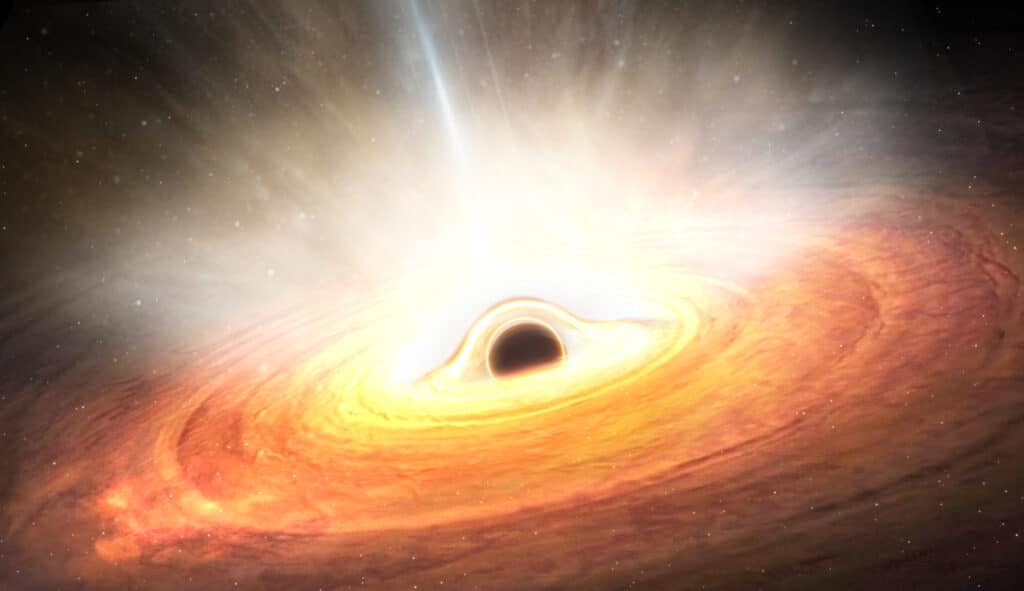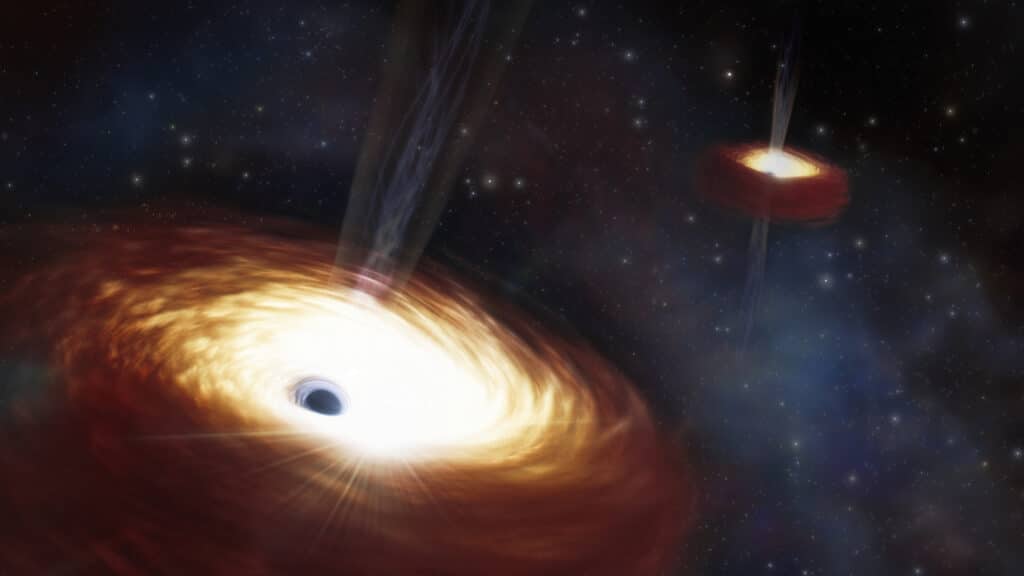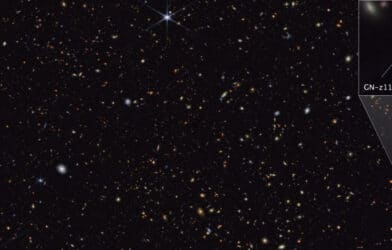An international team of astronomers have made a weighty discovery involving a supermassive binary black hole. The binary’s combined mass reaches a staggering 28 billion times that of our Sun, making it the heaviest binary black hole ever measured.
This finding provides unprecedented insight into the mysterious cosmic ballet that governs the universe’s most massive objects. Utilizing the powerful Gemini North telescope in Hawai‘i, part of the International Gemini Observatory operated by the National Science Foundation’s (NSF) NOIRLab, researchers have offered a glimpse into a phenomenon that has puzzled astronomers for decades: the merger of supermassive black holes at the center of massive galaxies.
At the heart of their study is the elliptical galaxy B2 0402+379, home to the only known supermassive black hole binary with a separation narrow enough to see both entities distinctly—merely 24 light-years apart. This discovery is pivotal as it marks the smallest separation ever directly measured for such a binary system, hinting at an impending merger of cosmic scale. Yet, this anticipated union has intriguingly been at a standstill for over three billion years, posing the question: why has this celestial merger paused?
“The excellent sensitivity of GMOS allowed us to map the stars’ increasing velocities as one looks closer to the galaxy’s center,” says study co-author Roger Romani, a physics professor at Stanford University, in a media release. “With that, we were able to infer the total mass of the black holes residing there.”
This groundbreaking measurement not only illuminates the binary system’s formation and the evolutionary history of its host galaxy but also supports the hypothesis that the mass of a supermassive binary black hole plays a crucial role in delaying its merger.
“The data archive serving the International Gemini Observatory holds a gold mine of untapped scientific discovery,” explains Martin Still, NSF program director for the International Gemini Observatory. “Mass measurements for this extreme supermassive binary black hole are an awe-inspiring example of the potential impact from new research that explores that rich archive.”
Researchers surmise that the binary formed through the merger of multiple galaxies, with B2 0402+379 being a “fossil cluster” — a conglomerate of a galaxy cluster’s stars and gas into a single massive entity. The binary’s significant mass indicates it likely formed from the combination of several smaller black holes.
The study also explores the mechanics of how supermassive black holes inch closer together. Instead of colliding directly, they engage in a gravitational dance, slingshotting around each other, gradually losing energy to their surrounding stars until they’re just light-years apart. Yet, for B2 0402+379’s black holes, the process has stalled. The binary has expelled almost all nearby matter, leaving the galaxy’s core devoid of the stars and gas necessary to further decelerate their orbit.

“Normally it seems that galaxies with lighter black hole pairs have enough stars and mass to drive the two together quickly,” notes Romani. “Since this pair is so heavy it required lots of stars and gas to get the job done. But the binary has scoured the central galaxy of such matter, leaving it stalled and accessible for our study.”
This leaves open the question of whether these giants will ever merge or remain in their prolonged standstill.
The team plans to conduct follow-up investigations to ascertain the amount of gas remaining in B2 0402+379’s core, offering further clues about the future of this massive black hole binary. The outcome of this cosmic standoff could have profound implications for our understanding of the universe’s most dramatic events, including the potential for generating gravitational waves far surpassing those observed from stellar-mass black hole mergers.
The study is published in The Astrophysical Journal.


-392x250.png)











Comments